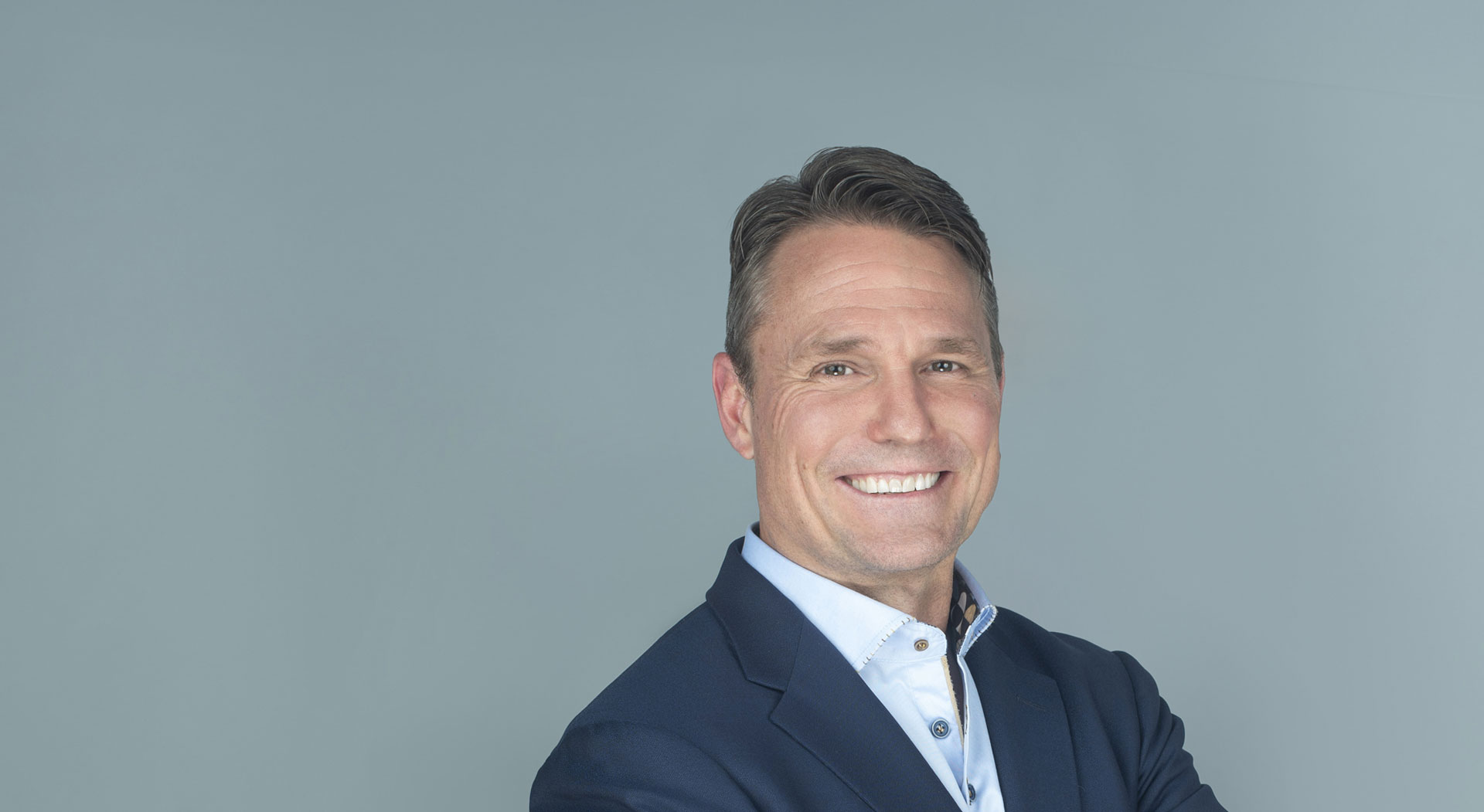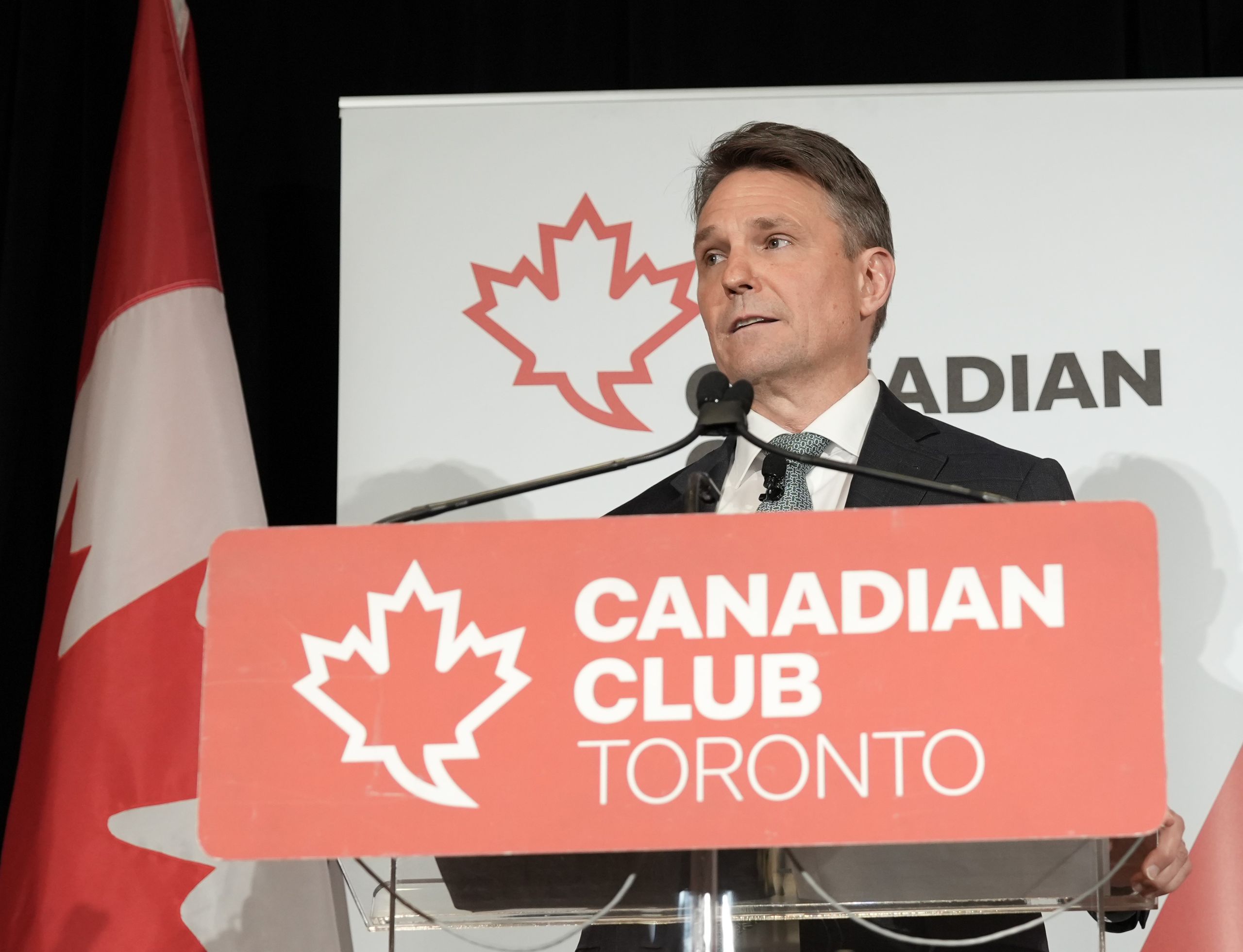
Executive Summary
As the threat of climate change grows more urgent, companies in every sector and region are making commitments to achieve net zero. The ability to abate greenhouse gas (GHG) emissions can affect the valuation of an enterprise; announcing such a commitment can move the stock price. Currently, however, the data is not available for boards and investors to rigorously assess a company’s ability to make a commitment and in the case of companies that have already made commitments, to make good on them.
CPP Investments developed a standardized Framework for companies to report their current level of GHG emissions throughout their operations, as well as their capacity to abate them under different scenarios. This proposed Abatement Capacity Assessment (ACA) will help boards and investors have a greater degree of confidence in a company’s commitment and ability to transition to a low-carbon future. The Framework also includes a Projected Abatement Capacity (PAC).
CPP Investments Insights Institute recently hosted a series of roundtables with institutional investors, ESG/strategy consultants and independent auditors to understand the challenges and concerns with the proposed Framework, to develop steps to refine and improve it. Our goal is to build consensus around a reporting template that can be widely adopted and produce consistent, comparable data that senior management, boards and investors can use to assess the feasibility of GHG emissions reduction commitments.
By providing much-needed information about a company’s current and projected ability to abate its GHG emissions, based on current pricing, technology and regulations, we believe the Abatement Capacity Assessment (ACA) will help boards and investors have a greater degree of confidence in a company’s net-zero commitment. More detail on this ACA/PAC Framework is available in our report, The Future of Climate Change Transition Reporting.
Key takeaways
- Institutional investors confirmed the belief that there is data deficiency both in the boardroom and the market. Participants reported that since the Framework is highly complementary to existing climate-reporting initiatives, like the Task Force for Climate-related Disclosures (TCFD) and SASB Standards, investors believe it can be decision-useful in appraising the feasibility of corporate transition plans. The Framework is a practical tool to help investors fulfill the requirements of existing climate-related disclosures.
- ESG/strategy consultants further reinforced the view that boards and management would benefit from the insights gathered from applying this Framework, enabling them to develop better net-zero strategies. Since the Framework offers a methodical way to assess emissions abatement pathways today and under future scenarios, consultants believe it would provide valuable insight to complement the advice they currently give. Consultants note that while companies may be reluctant to share too much data, the Framework will allow them to disclose abatement capacity without compromising their commercial interests.
- Independent auditors acknowledge that while work needs to be done to take the Framework from concept to standard, the issuers conducting this analysis would be better placed to meet reporting requirements and commit to transition plans. This would make the proposed Framework useful for readiness assessments.
- Participants across each group generally agree that companies making net-zero commitments may not fully appreciate what meeting those commitments would entail. They note that conducting this Abatement Capacity Assessment could help assess the feasibility of a net-zero target and what achieving that target might entail for the business today, and under future scenarios.
- Enhancements to the Framework, as proposed by roundtable participants, include:— utilizing a company’s own shadow carbon price to present scenarios where abatement of overall GHG emissions is “probable” or likely to become economic over time;
— defining the boundaries of what is included in Scope 3, especially in the short-term, is critical (for example, companies could consider only accounting for Scope 3 emissions that they can control, such as business travel);
— emphasizing that the assessment is highly complementary to existing and proposed climate- reporting initiatives [e.g., TCFD, SASB Standards and International Sustainability Standards Board (ISSB)]. It is not an incompatible disparate tool;
— being clear that the Abatement Capacity Assessment is both granular and dynamic and will change as technology and regulation evolve; and,
— taking a sector-specific approach to implementing the ACA/PAC Framework.
Moving Forward
We will refine the ACA/PAC Framework to incorporate these enhancements. CPP Investments has also conducted a successful pilot of the Framework within our portfolio, allowing us to apply the insights from the discussions and glean further learnings. Our experience demonstrates that the Framework can facilitate comparable and consistent disclosure, which is useful to boards, management teams, and investors alike. Join us in moving this concept into a fully implemented standard.
If interested, please contact Richard Manley, Managing Director, Head of Sustainable Investing, Global Leadership Team, CPP Investments and Chair of the SASB Investor Advisory Group, with questions.
Actions you can take to help the ACA/PAC Framework become a decision-useful reporting standard:
- Reference your support of the Framework in your submission to ongoing public consultation by the European Financial Reporting Advisory Group (EFRAG), United States Securities and Exchange Commission (SEC) and International Sustainability Standards Board (ISSB). We’d be happy to provide you with a copy of CPP Investments’ submission to use or reference. Our SEC submission is available here.
- Further indicate your support by allowing us to name your organization as a supporter of the proposed ACA/PAC Framework, in the next iteration of the paper to be released for COP27.

Roundtable Findings
Feedback from asset managers
As more companies make net-zero commitments, boards, investors and other stakeholders need a consistent way to assess the feasibility of those commitments.
- Some companies got caught up in the climate change momentum and made net-zero pledges without thinking through the necessary steps and costs. “…conducting this Abatement Capacity Assessment would provide a Framework and provide useful insights… particularly when it comes to assessing what’s feasible for a net-zero target and then what exactly that entails for the business.”
- The Framework offers comparability across industry sectors and over time ― something that other reporting tools don’t provide. “It’s a good discipline to really map out what is actionable.”
- The Framework would let investors more accurately weigh climate risks and costs. It can enable companies to report data on material ESG factors, that are fundamental to determining enterprise value. “We need to assess whether a business model is resilient to the transition.”
In drafting the Framework, CPP Investments kept in mind the needs of public company boards tasked with approving greenhouse gas (GHG) emissions reduction targets and long-term net-zero commitments.
- Participants believed that the Framework can help boards fulfil their oversight responsibilities. “It’s a good Framework for comparability and clarity, not only across industries, but also for tracking year over year progress.”
- But they also saw challenges. Some voiced doubt that board directors have the expertise to effectively use the Framework. “From my experience engaging with board members, I don’t see them having the competency and experiences and information to fully analyze what net-zero means.”
- Others believed that boards need better data—comparable to what they get on financial matters—to effectively engage on decarbonization in their organizations. “For them to better understand they issues, they will need more granular information.”
- As a result of these deficits, some believed boards generally lacked a sense of urgency around climate change commitments. “Trying to get companies’ attention around climate up at the board level has been difficult.”
Decarbonizing a company is a complex process with multiple obstacles and levers that can vary dramatically between businesses. That makes it challenging to develop a universal Framework.
- Since no single data set can provide total clarity, the ACA/ PAC Framework would be a supplement to existing sources of information. “It is one of many tools that a board will need in order to drill down and keep management accountable.”
- In order to gain wide adoption, the Framework will need to address underlying accounting methodologies and definitions. “Without doing that, it’s going to be very hard for companies to get their arms around these issues.”
The economics of achieving net zero will vary by industry, geography, technology and other factors—and each of these factors may vary over time.
- The proposed Framework uses two standardized carbon price assumptions ― US$75 and US$150 per ton ― to simplify this complexity, essentially asking companies to evaluate their ability to abate each source of GHG emissions at these two prices. While the Framework provides a static picture, companies should expect that their Projected Abatement Capacity will be dynamic, as technology costs and the regulatory environments change. So, companies could consider running the Abatement Capacity Assessment year-over-year to capture the impact of such changes.
- Some participants felt carbon prices were too fluid and unpredictable to make the calculations around abatement capacity meaningful. In light of this, several participants suggested adding a third variable, each company’s own “shadow” carbon price and also proposed considering the difference in prices in developed vs. developing markets. “That would be the third price you would like to know: what is the current price you apply, then what happens at US$75 and what happens at US$150.”
- Others questioned whether the implicit assumptions about future technology costs would yield an accurate view of abatement capacity. “The assumptions on technology costs are problematic for the forward-looking elements of this…. because we’re not going to get to US$150 a ton without further technological innovation that will drive down technology costs, change consumer preferences, etc.”
Accurately accounting for GHG emissions that occur elsewhere in the value chain is difficult even for the most sophisticated reporting companies.
- Some participants worried that many companies would be unable to accurately assess their Scope 3 emissions. “Most issuers don’t really assess Scope 3 correctly, so we really have to be careful when pushing them toward that because, if you don’t assess properly your analysis might be a little bit twisted.”
- The risk of double counting is an issue. CPP Investments is looking at ways companies could accurately add up emissions for each company in their value chain The goal is to try and effectively net out the emissions for an issuer, net of what’s been reported by their suppliers and customers.
- One participant pointed out that there is already inconsistency in how companies report Scope 3 and what exactly they include. Depending on the approach the company takes, “you’re going to end up having very, very different results for a company in the same group with the same footprint.”
- One participant suggested leaving Scope 3 to the side, at least initially. “The challenges around Scope 3 might lead some to question the results.”
Reporting protocols such as the Task Force on Climate- related Financial Disclosures (TCFD) and the International Sustainability Standards Board (ISSB) are here to stay. To be widely used, participants believed the new Framework must add value within the context of existing tools.
- One asset manager noted that the proposed Framework “is complementary to what TCFD has put out on transition plans and scenario analysis. In a lot of ways, it is concretization of scenario analysis” but suggested that “it needs to be framed as a way to meet TCFD and ISSB requirements, rather than a separate idea that we’re throwing out into the world.”
Given the pressure to make and follow through on net-zero commitments, there is a clear need for a consistent way to evaluate scenarios, communicate goals and measure results.
- Participants agreed this Framework met a lot of the needs in the market. “It is a good Framework for comparability and clarity, not only across industries, but also for a given company.”
- They also believed it would help companies add rigor to their analyses. “It’s a good discipline in a company to really map out what is actionable.”
Feedback from ESG/Strategy Consultants
Participants saw a strong need for the Framework. Many expressed concern that companies were making net-zero commitments without fully appreciating what meeting those commitments would entail.
- As one consultant put it: “Management teams are making broad proclamations, predicated on assumptions about policy and technology and consumer preference that are, at best, finger in the wind.”
- Others agreed there was a strong need for a basis of evaluating those commitments. “In some cases, their CEOs have just gone out and made a commitment. They haven’t even checked in internally on what this even means. And now you’ve got the groups underneath that we work with who are panicking.”
- Another implication is that in some cases, bold net-zero commitments may be coming from companies with an incomplete understanding of the actual costs. “Some of the asset managers who are being punchier are the ones who perhaps haven’t done as much of their homework to understand how hard this is going to be.” Conversely, companies with a better grasp of the costs may be making more modest commitments—opening themselves to criticism.
There was concern among the participants about the ability of corporate directors to fully appreciate the issues related to climate change. Many may not be up to speed on net zero. Even those who appreciate the need for a decarbonization strategy may be behind the learning curve.
- Some board members have not grasped that the imperatives around climate change are real and are not going away. “You’re having some people on the boards who are seeing the signposts, but even once we finish the board education session, in the discussion, there’s a back and forth over how real is this.”
- According to participants, the lack of sophistication in the boardroom contributes to the passivity. “They just don’t understand details. One of the challenges is that board discussions always start with the alphabet soup [of regulations and methodologies]. There are too many of these different things. This leads to inaction.”
- Boards are increasingly aware of this shortcoming and are looking for solutions, one consultant said. “Over the last six months, we’re seeing boards asking for help. This Framework can bring some order to the alphabet soup and make things a little bit clearer and simpler.”
CFOs will be an especially willing audience for this Framework, say consultants. Rules recently proposed by the U.S. Securities and Exchange Commission have put decarbonization on the front burner for many of them.
- One participant noted that CFOs will now be more receptive to a methodical, consistent reporting Framework. “The SEC proposal is a wakeup call to CFOs. It takes this issue beyond the annual report and into the financial statements.”
- Others agreed. “CFOs are going to need to be able to [assess] the credibility and economics of the abatement plans.”
- “This is a way to allow a structured analysis to take place,” another said. “It is going to be quite helpful to have a Framework to look at this as opposed to it being completely freestyle narrative.”
Companies may fail to take carbon-reduction steps because they don’t recognize they are already financially feasible and essential to meeting goals. By utilizing the Framework, boards and management could catalyze strategy.
- By understanding how certain steps can further emission- reduction goals, companies may be more willing to take those steps, even if the returns are modest. “There are levers that are economic today that are not being pulled because there’s not sufficient return to justify taking management time and attention. This would definitely be a good tool to draw attention to those and get those levers pulled.”
- The Framework offers a methodical way of assessing emissions abatement pathways today and under future scenarios. This could help answer questions like “What is the size the problem today? Is the strategy ambitious enough, given how much you need to abate?”
- One consultant felt it could focus leaders on the potential disruption decarbonization may pose to their companies. “Many leaders think ‘We’re going to have the exact same business model in the future. We’re just going to tweak one thing and we’ll be low carbon.’ That may be the case in some sectors, but for a lot of sectors, it’s going to fundamentally change the sector itself.”
The Framework’s goals include helping regulators prioritize rules, guide innovation and research, and focus investors on smarter capital allocations. Each of these objectives may require a different level of detail and getting that balance right is key.
- One consultant said, “One of my fears is that if we try to keep this either too high level or scale too quickly, we could lose the level of detail and sophistication that companies need to make this decision-useful.” An appeal of the assessment, is its potential “to truly understand where the molecules in my business are.”
Expected future technology gains may be difficult to quantify today but could alter costs significantly in the future.
- One participant called this a negative effect of static technology cost assumptions. “One of my big concerns is that if boards see that only 15% reduction is economical today, the natural reaction is, why would we commit to anything more than that?”
- There was also a concern that focusing on current costs could nudge companies in the wrong direction. One participant used the example of carbon capture and storage and hydrogen power. Hydrogen may have a greater potential for technology gain in the future, but current costs could bias boards toward a lower cost/lower potential pathway. “Companies need to understand how the technologies are shifting.”
- On the other hand, the Framework could be a starting point for beginning to evaluate new technologies. “It gives a way to determine at what carbon price uncertain technologies become economic.”
Companies will want to determine the right level of disclosure to ensure that they are able to provide useful information to key stakeholders while ensuring they are not sharing too much detail on their decarbonization strategies with competitors.
- One consultant suggested two versions of the Framework: a detailed template for purely internal consumption and another for the investment community and the board. “Sustainability is 21st century value creation. You’re asking parties that are in competition with each other, where an edge in climate can actually be a driver of sustained advantage, to put out information.”
Feedback from independent auditors
Roundtable participants believe that although their bigger clients have well-developed net-zero strategies, small and midsize ones have barely addressed the issue.
- “They are not equipped” said one auditor, observing that many companies they work with lack the technical competency to calculate their own carbon footprints, let alone those of their suppliers and customers.
- All agreed that businesses need better tools to organize their thinking, prioritize issues and develop actionable short- and long-term plans. “They need a Framework to reduce the dichotomy between the next three years and the next 25.”
- The lack of consistent, reliable data puts investors prioritizing climate issues in a bind. “On one side of the table, you have institutional investors trying to do their analysis. On the other side, you have clients who are not that sophisticated. That is a real challenge. Some sort of template would provide helpful information.”
Auditors are grappling with how to incorporate abatement assumptions and sustainability reporting into financial statements, and fear the risks of getting it wrong.
- The Framework would address a lack of consistent rules and reporting structures in existing sustainability reporting—a major challenge for auditors. “If somebody specifies what should be used and everybody reports to that at least we’ve got consistent numbers. If you have each firm making up their own numbers, you’re going to have information which is difficult to understand, and which makes life more difficult for the auditors because they’re then trying to see whether the future offset price in the 30 years’ time they’ve picked is reasonable.”
- “Sustainability reporting has been ‘let’s make it up as we go along because there aren’t any rules,” said one auditor, opening risks of auditors assuring something that may not hold up.
- The Framework could also help with another aspect of sustainability reporting that is key for auditors: “Have you made a net-zero commitment but haven’t impaired your asset? It doesn’t make sense if you’re saying you’re going to net zero but none of your assets will be stranded. That is what users of both financial statements and sustainability reporting are going to want to know. How does this all tie in? How does this impact the financial performance?”
- One auditor believed the Framework would help with readiness assessments—an important service auditors provide to clients. “It doesn’t result in a published opinion to the broader world, but it does provide feedback to both management and the board in terms of how ready is the company to produce these types of metrics? How strong are the underlying sources of information? How strong are the systems and processes and controls to generate it?”
- Sustainability reporting is inherently complex. One auditor believed the Framework could help tame that complexity. “It would surface the intersection between ambition, operational constraints, challenges and trade-offs. It could be a powerful tool.”
Auditors suggested that accounting rules about mining and oil reserves might be applied to other companies’ net-zero efforts.
- Natural resources companies must clarify in audited financial reports how much of their unrecovered reserves are proven and economic to produce, how much will probably be economic to produce, and how much is speculative. Some participants thought climate risk accounting could take a similar approach. “Could this Abatement Capacity Assessment be a useful part of that process?”
- Another auditor noted that reserve reporting arose to address issues in a particular sector and wondered if a sector approach would also make sense for the Framework. “You don’t try and do the global economy; you start off with certain sectors and then move forwards from there. It’s the old ‘How do you eat an elephant? One bite at a time,’ bit.”
Participants believed the Framework could fill an unmet need as other sustainability reporting tools tend to be broader and are not meant to address the granular costs of abating specific emissions.
- As the roundtables with asset managers and consultants highlighted, to be widely adopted the Framework would have to be seen as closely related to other reporting tools. One auditor said, “My only concern is just having it as a separate Framework. There is so much noise and so many things that they’re trying to do that if this could be built into something that they were already trying to do, I think that would be hugely beneficial.”
- Another participant put it slightly differently: “A key success factor is that it needs to contribute to the convergence of standards rather than the divergence.”
- Some participants believed that prospective rules from the SEC and other rule-making bodies may lack the granular detail needed to have confidence in net-zero commitments. “I think the lack of specificity on the proposed rulemaking and standards side is going to be a problem. What you have developed hopefully will help fill some of that gap.”
- Others pointed out that a more granular Framework would require the management and boards of companies to develop a deeper understanding of emissions in their own operations—something other reporting tools do not require. “It’s going to be very important that this abatement capacity metric is focused on is a subset of the broader net-zero transition, both in terms of achievability (of a transition) and of what companies are actually capable of reporting.”
The Framework is forward looking, but the assumptions underlying the reported data could change—impairing the accuracy of the calculations.
- One participant noted that if many companies move to lower emissions in the same timeframe, increased demand for current technologies could lead to unanticipated market disruptions. “If everybody does it, is there actually market capacity to make it successful? Are we painting a picture that this is economically viable through current technologies without factoring in there isn’t enough supply?”
- Others felt that potential for cost swings—in either direction—made it essential to think of the Framework as an annual reporting tool. “I think that updating this on a regular basis would be absolutely necessary because external circumstances change.”
Auditors agreed that such abatement assessments can be useful for investment analysis but challenging to certify. The inherent forward-looking and theoretical elements invite extra scrutiny, but auditors will become more comfortable over time.
- One participant felt the profession would need to evolve. “There’s a lot of things that we have to forecast and we’re going to have to get lot more comfortable with forward- looking information.”
- Another participant agreed, pointing out that when auditors currently do an impairment test, they look forward five years and assume a growth rate of expected free cash flows. “That’s not going to work in this new environment. We’re going to have to get comfortable looking out to 2030 to 2050. And if I can’t get comfortable with that, I won’t be able to audit the financial statement. So, we in the assurance profession are going to have to evolve and get a lot more comfortable with things we’re currently very uncomfortable with.”
- Another felt that evaluating the long-term financial impact of decarbonization on a company should not be much different than qualitative judgements auditors already make about assets on a company’s books. “You show your metrics and your targets and decide if those targets are reasonable. Whether a net-zero target for 2050 is reasonable is an important question, and I think this Framework can help us assess that.”
- Auditors will increasingly evaluate decarbonization in a broader context of a company’s operations, another said, deciding on a case-by case basis whether a specific piece of information should be assured or whether it is part of an overall assurance. In a future integrated audit environment, “We may audit the financial statements and sustainability reports at the same time and think about the interaction between the two.”

Conclusion
We are grateful to the participants of our three virtual roundtables for their candid and insightful feedback and plan to publish an update to the ACA/PAC Framework incorporating their insights.
If you have made or are considering making a net-zero commitment, we encourage you to consider using the ACA/ PAC Framework as a practical tool that can help your business prepare to thrive in a net-zero economy.
John Graham on the Evolution of the Canadian Investment Model
The Canadian pension fund model is recognized globally for its strong governance, long-term performance, and disciplined approach to
John Graham’s Canadian Club speech highlights the CPP Fund’s strength
The Canada Pension Plan (CPP) Fund is strong, sustainable and built to last. That was the message from our President & CEO, John Graham, in
From Experiment to Workflow: CPP Investments and the Challenge of Turning AI
If the country's largest pension fund is seeing early success integrating artificial intelligence (AI) across its operations, what's











